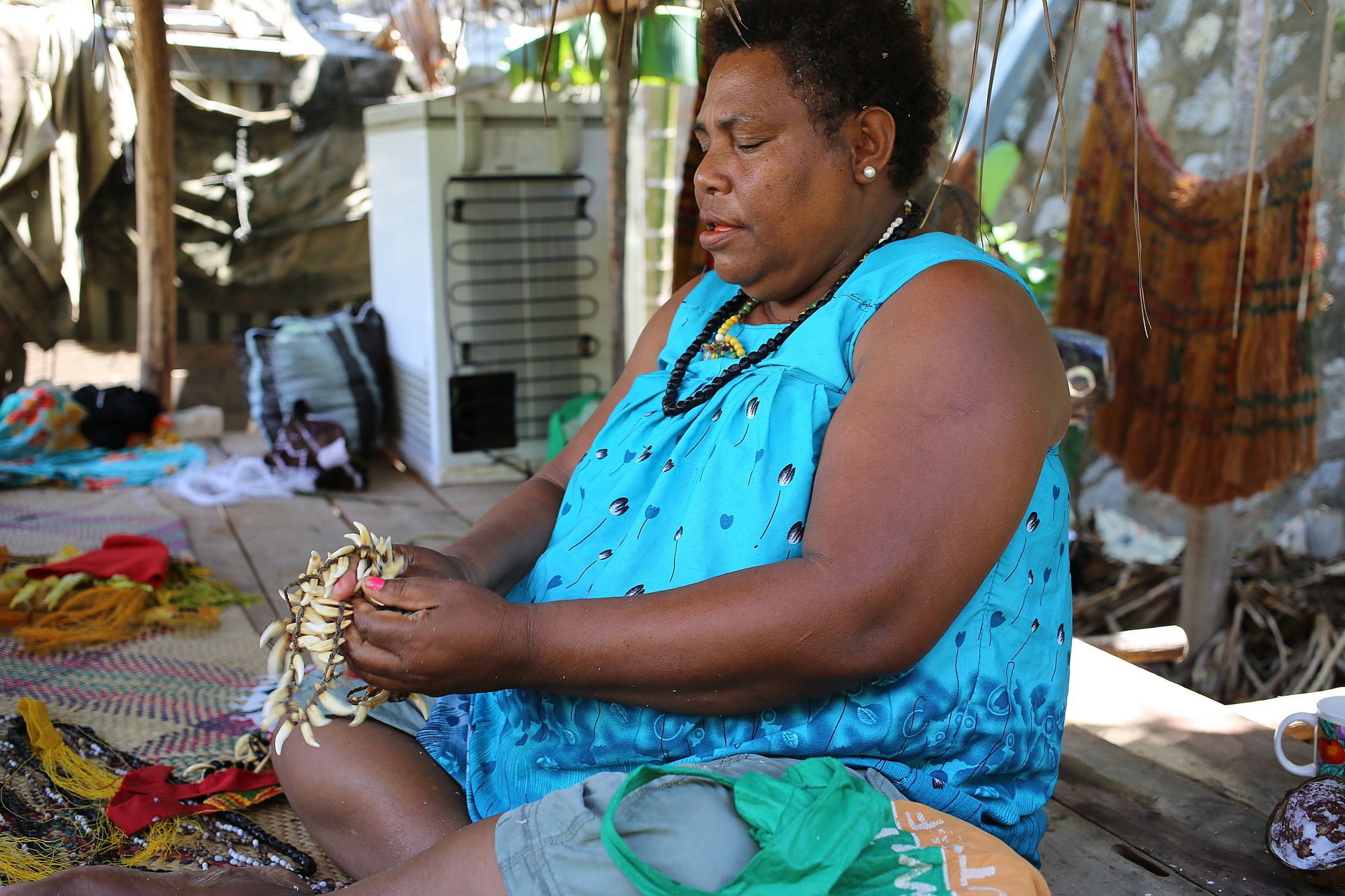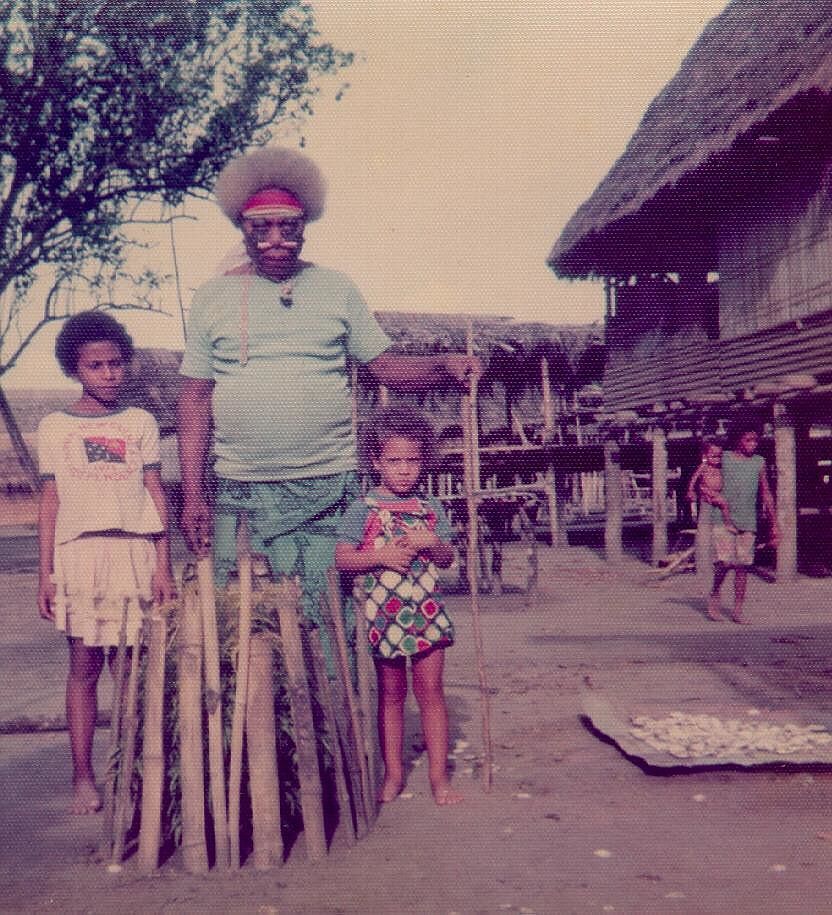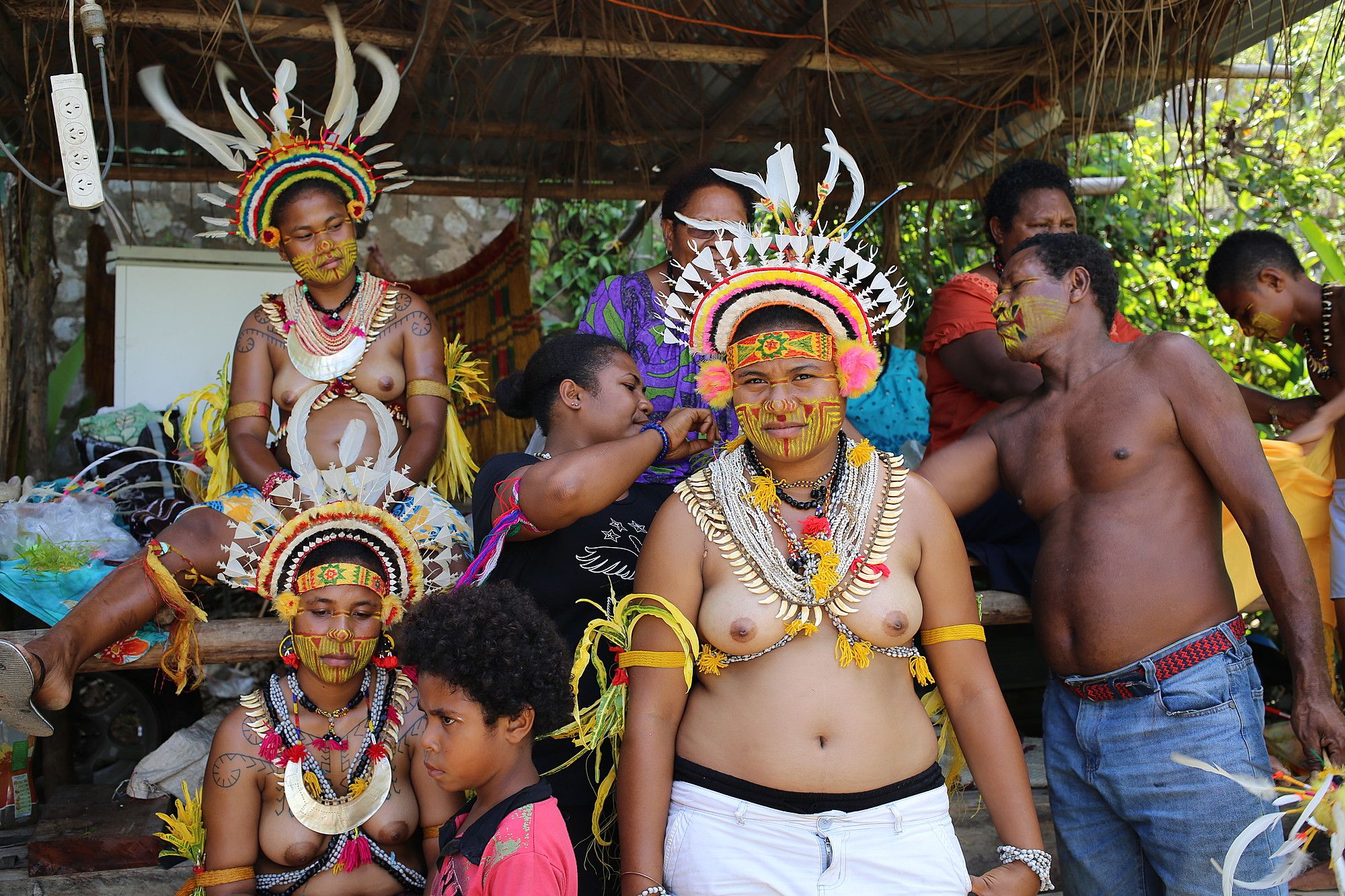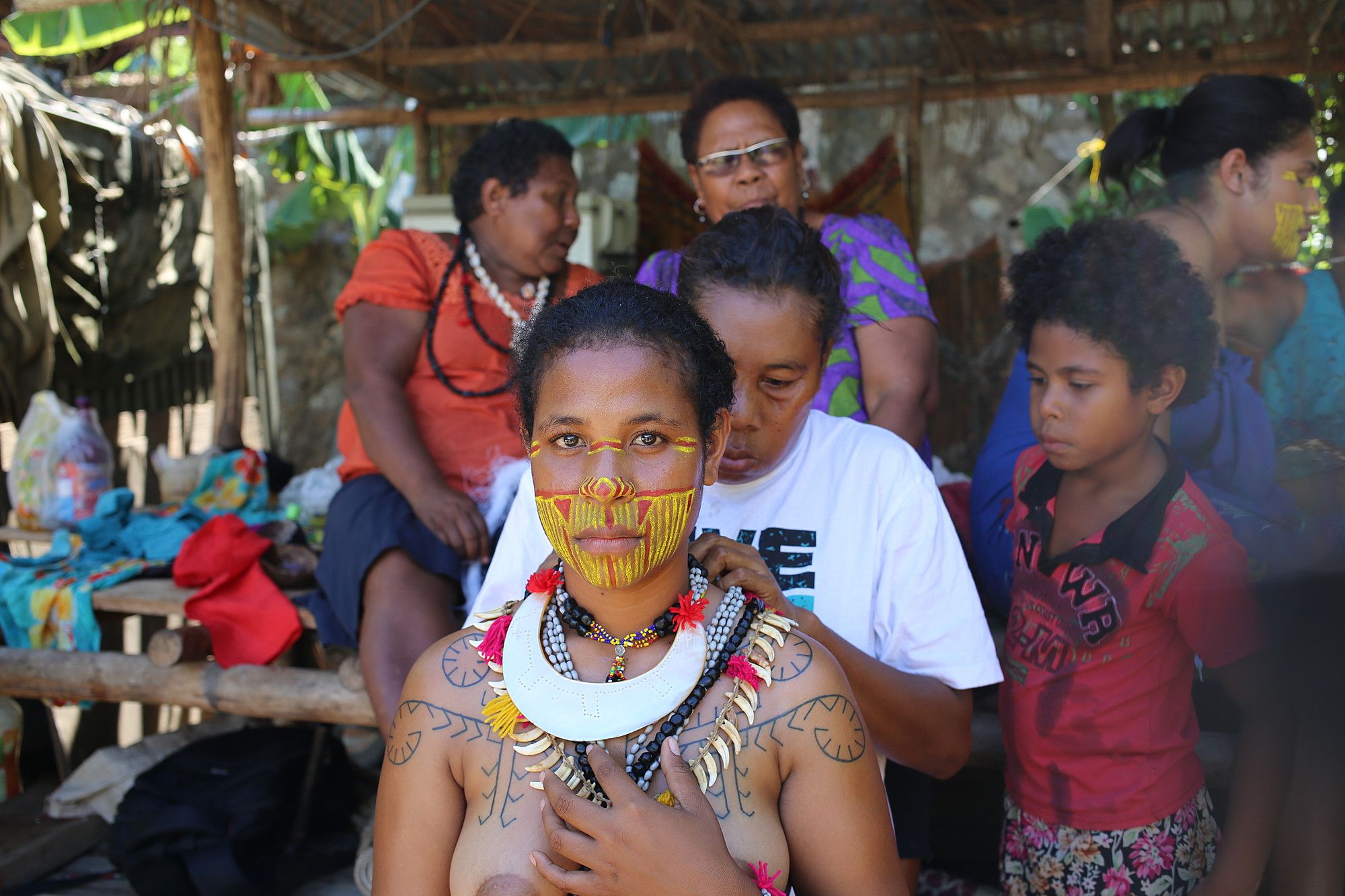First Language
For dancer and mark maker Julia Mage‘au Gray, words are an overused way of communicating. Bodies, however, never lie.
We’re collaborating with Creative New Zealand to bring you the groundbreaking Pacific Arts Legacy Project. Curated by Lana Lopesi as project Editor-in-Chief, it’s a foundational history of Pacific arts in Aotearoa as told from the perspective of the artists who were there.
Words and I have a turbulent relationship.
I trust more in what the body shares than what comes from the mouth.
My first language was my mother’s tongue, Mekeo, and I lost the words as they were gently replaced with my father’s tongue, English. Then and now, my relationship with languages always begins with the body (mannerisms and shapes). As a child, reading peoples’ bodies and hearing tones was the easiest way to know what was happening when understanding words failed me.
A truth I learnt early was that the body never lies. That strength comes in knowing how to read, translate, accept and trust what your body tells you. It is so easy to ignore your body and only listen to and act upon your thoughts. I have always had great difficulty in translating what the body says into words. Words, for me, are an overused means to express and communicate. Yet here I am, writing words to be read, so I can story-tell and share in a non-ephemeral and widely accepted way.
Aunty Pena oiling kapugu.
We were walking from the village on the road to Gopoauga. The sun was starting to set and, in the distance, I saw a slender man in a black shirt and laplap, with a neatly tied scarf around his round-shaped hair. As we got closer to him, he stepped away into the tall kunai grass and disappeared from view. Normally we greeted everyone along the way, but his behaviour was unusual to me. I asked my mum who that man was, and she remained quiet. We continued to walk in silence, looking straight ahead.
As curiosity got the better of me, I turned my head and looked behind to see, in the distance, the man that had been walking in front of us was now walking behind us. Time felt warped. It was the wrong time to speak, the right time to listen. In this moment, the absence of words spoke volumes to me. There were so many moments like this in my childhood and these moments taught me the value of being aware of your surroundings and trusting what your and others’ bodies signal to you. I learnt later, as I sat with my Bubu Auki (grandfather), that the man we had seen was a practising sorcerer.
There is no doubt that the way you are raised shapes you for the rest of your life. Barefoot, shirtless, dirt-track, tree-climbing journeys over volcanic terrains, through forest and gardens with stolen peanuts. Avoiding the packs of dogs, the snakes, the kobonis, the fresh buai spat and the face-lengthstick insects that fell out of trees. The heat.
Julia aged 4 with Bubu Isoaimo and Aunty Minia at Oaisaka, Mekeo. [Photo: Rick Gray]
In juxtaposition.
Thick woollen skirt, stockings, knitted striped jumper, dangling clown toy, shiny shoes hitting the pavement and walking, walking, shopping-bag trolley. Running to catch my Bubu Helen (grandmother) in her pleated tartan skirt with antique brooch and set, curled hair. Holding a bag of pink musk lollies and the smell of car exhaust. The cold.
My memory of those childhood moments hold no words. Just the physical relationship between bodies in space in a different time that was and still is, though now as memories held in my body.
Moving became the best way to learn about my culture and my heritage as a Papua New Guinean Australian. Learning songs and dance from ples and presenting them as authentically as possible outside of their original context. Along the way gaining the understanding that an old culture’s dance is the pinnacle of the way a culture expresses its aesthetics, its values, its history, its now. Moving also helped me understand that culture is the way we live our daily lives in our surroundings and that heritage is what connects us to the cultures of our families and ancestors.
My identity was always questioned by those unaware that the body holds the connection to family, to heritage.
My lack of fluency in speaking two of the 800-plus Papua New Guinea languages – Mekeo and Tok Pisin – meant that I could not use those words as a currency to gain acceptance and prove my identity. My identity was always questioned by those unaware that the body holds the connection to family, to heritage. Performing cultural dance from my heritage was, at first, a way to express and prove my identity to others, but eventually this moved into learning to understand more about myself and the people around me, and the heritage they brought with them when we moved together.
Port Moresby, Melbourne, Rabaul, Darwin, Adelaide and Auckland.
Fast-forward from childhood through adulthood via visual arts and dance degrees, touring, busking, touring, dance productions, touring, cultural dance classes, touring, museum visits, touring, library searching, touring, arts institutions, touring, photography, touring, documentary making, touring… to marking skin.
Family getting ready to dance, Port Moresby, PNG, 2014. [Photo: Julia Gray]
Marking skin was never a thought, a dream, a desire of mine. Even though my Bubu Etoli (grandmother) wore poapoa (Mekeo tattoo) I didn’t ever wish to mark peoples’ skin. Just having my skin marked to honour her was enough. For me, marking skin was a new world that I would have to relearn how to walk in. I felt well and truly burdened with the responsibility of breathing life into a cultural practice that was dying. I continued.
The resistance and the self-doubt were debilitating, and like nothing I had ever experienced. I questioned my identity and whether I was Papua New Guinean enough, whether I had the right to do this mahi, as our area had stopped our marking practice earlier than other areas in Central Province, Papua New Guinea. The thought of the mark being permanent – and not the felt pen or paint we would draw our designs with, which would wash off after the dance was over. The person you mark wears it for life (laser removal was not so common at that time). The fear of changing my life to continue this mahi, and how it would affect my family, surfaced all the time. The fear of quitting and not committing to what I had started surfaced all the time. I continued.
Marking first myself and then the women around me who offered their skin were the experiences that guided me to the realisation that marking skin is a visual translation of my first language. Acknowledging the body, the space, the energy, and taking stock of the way our bodies hold memory both of the old ones (ancestors) and our recent experiences. How our bodies move as a result of what came before and what is today.
Marking skin is bringing what can’t be seen to the surface.
Society today is markedly different to what it was for our old ones, though I believe wearing our visual language has the same purpose as it did in the past:
It speaks to the transitions and events in a person’s life.
It speaks of one’s standing in society and identifies family and region.
It speaks of our old ones in a new way that represents the past and speaks to the present for the future.
Unlike in the past, choosing to wear our marks today also speaks of the willingness of an individual to decolonise their body, moving away from the physical and emotional locks of the effects of colonisation.
Back track.
Shiny skin, no tee shirts, tutus out, afro hair and buai-stained teeth. Hands deftly winding moga for vea (bilum, string bag), strung between toes, and stories with words I could hear but could not speak. Many hands, shell peeling banana, headless chicken, shell scraping coconut. Loud stories and raucous laughter. Surrounded by family, confident in their bodies and strong in their purpose. Strong in their song and melodiously expressive in all of their emotion.
Elaka being dressed by Aunty Rita
Leaning my long limbs half on the platform and half on my mum, watching my sister light endless fires, mosquitos, kerosene lanterns in the darkness.
Today, I see people who are not so confident in their bodies, who measure their volume to suit their setting, who cover their skin and question themselves and others whether they are enough. Who measure themselves and others against a way of being that is not us. Disconnected from their bodies, therefore silencing their old ones.
cnz
This piece is published in collaboration with Creative New Zealand as part of the Pacific Arts Legacy Project, an initiative under Creative New Zealand’s Pacific Arts Strategy. Lana Lopesi is Editor-in-Chief of the project.
Series design by Shaun Naufahu, Alt group
Header photo by Pati Solomona Tyrell






